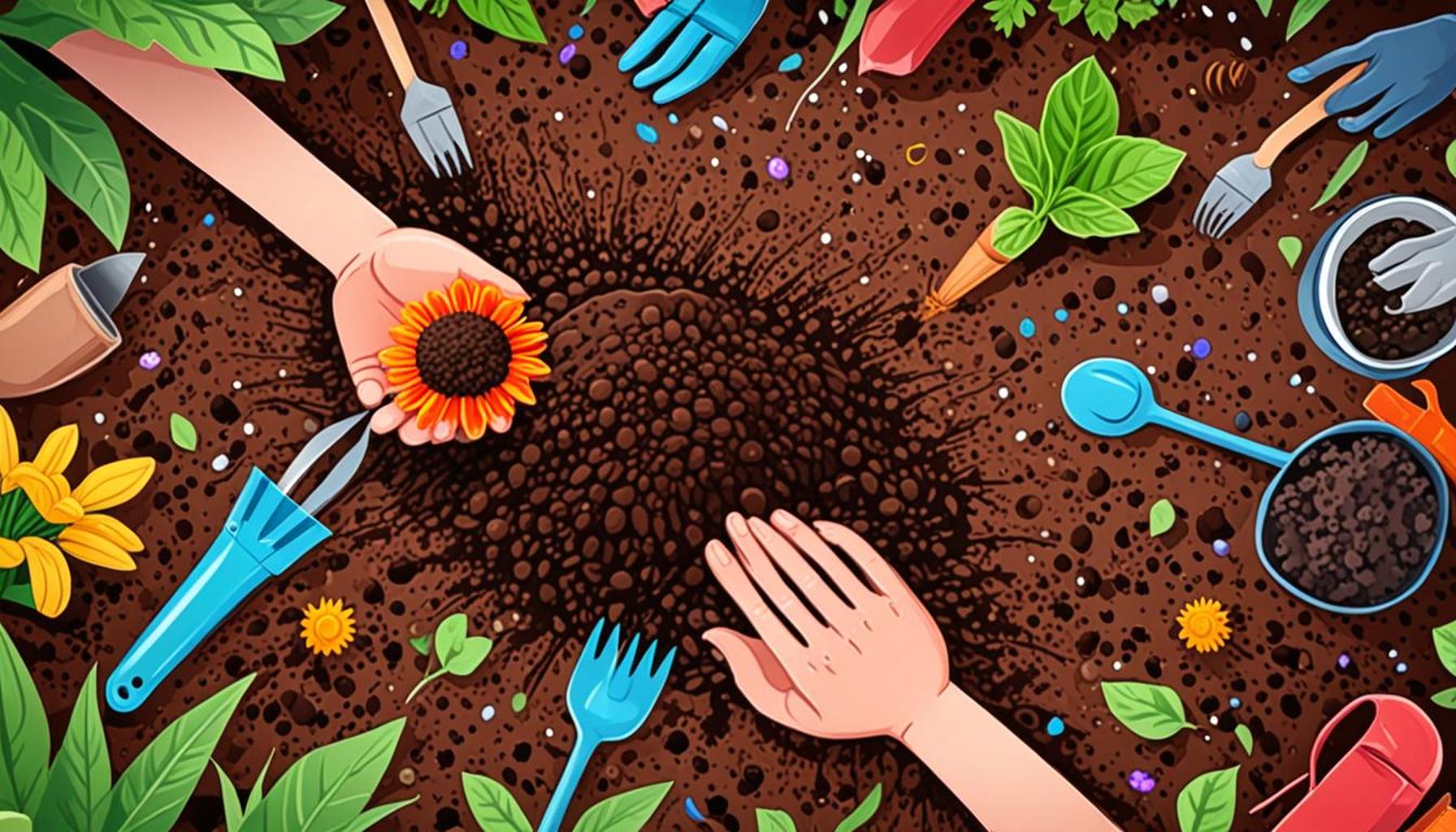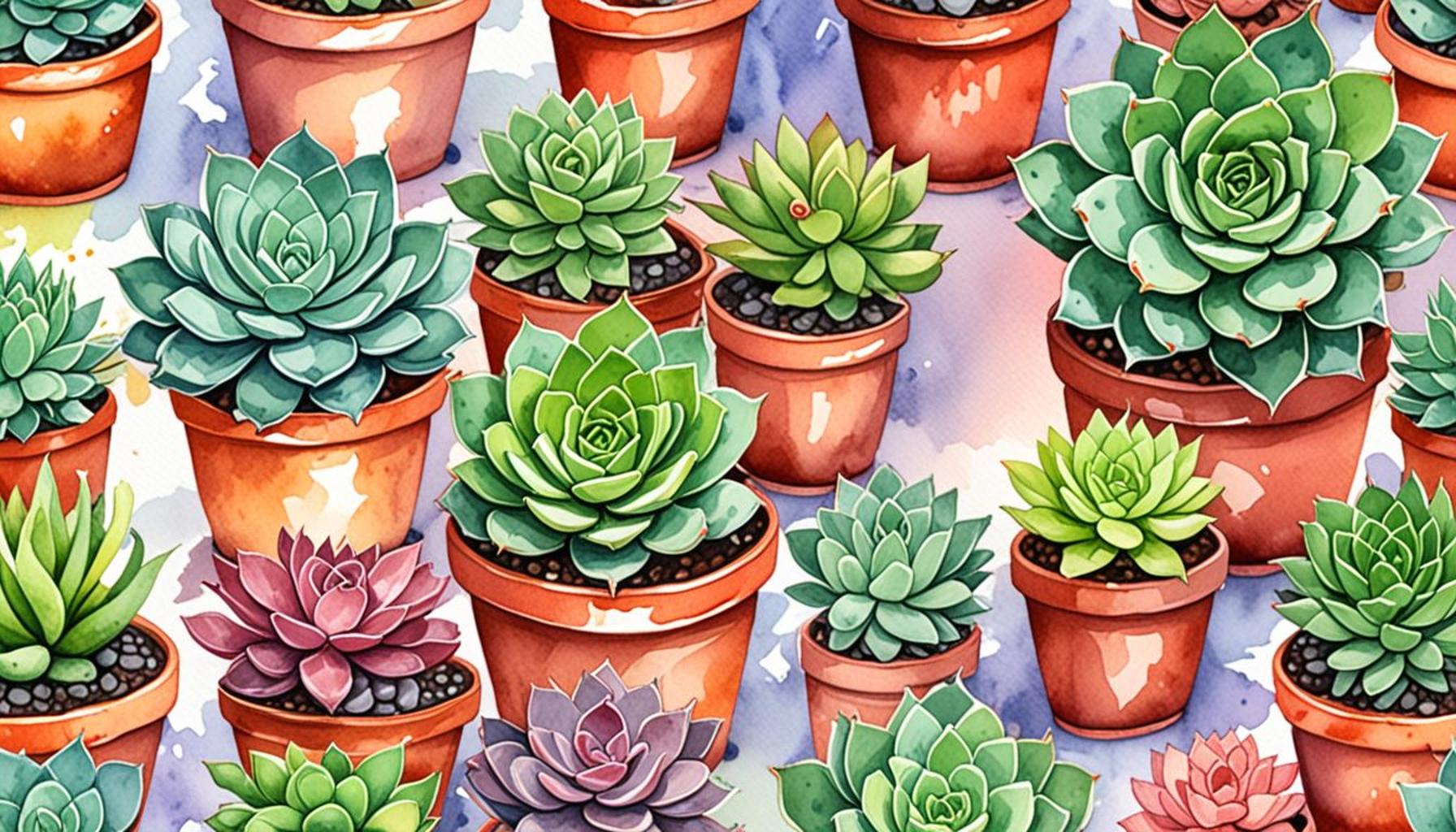Seasonal Plants: How to Select the Best Options for Each Season

The Art of Selecting Seasonal Plants
Navigating the world of seasonal plants can be exhilarating, offering countless possibilities to elevate your garden’s aesthetic and functional appeal. Choosing the right plants for each season not only provides visual allure but also contributes positively to the environment by improving air quality and creating habitats for local wildlife, including essential pollinators like bees and butterflies.
This journey begins with an understanding of the unique characteristics of your local climate, which greatly influences your plant choices. Depending on where you are in the United States, particular types of flora may thrive better in specific areas. For instance, the USDA Plant Hardiness Zones can guide you in selecting plants that will withstand the local temperature variations.
As the year unfolds, each season provides a fresh canvas for blossoming plant selections. Here’s a closer look at some excellent choices:
- Spring: As the chill of winter recedes, vibrant spring bulbs like tulips, daffodils, and hyacinths unfurl to bring bursts of color. These perennial favorites are often planted in the fall and bloom majestically when the temperatures rise, heralding the arrival of warmer months.
- Summer: The summer sun brings a vast array of colorful blooms, such as sunflowers, zinnias, and petunias. Sunflowers, known for their towering heights and cheerful faces, are a fantastic option for sunny spots. Zinnias and petunias not only add vibrant colors but are also easy to care for, making them perfect for both novice and seasoned gardeners.
- Autumn: As the leaves turn and temperatures cool, vibrant autumn flowers like mums, pansies, and asters take center stage. Mums are particularly popular due to their rich hues and long-lasting blooms, which can continue to brighten your garden even when the first frosts arrive.
- Winter: Winter might seem like an inhospitable time for plant life, but varieties like poinsettias, evergreens, and winterberry can add distinct character to your garden. Evergreens, for instance, provide structure and greenery throughout the cold months, while winterberry offers bright red berries that attract birds.
Each of these plants not only serves aesthetic functions but also plays a role in the broader ecosystem by attracting and nurturing pollinators. For example, sunflowers are not only beautiful but also can produce seeds that feed local birds. The resilience of these plants makes them ideal for various climates, enhancing your landscape design while promoting environmental sustainability.
In the following sections, we will further explore the nuances of seasonal plant selection, discuss effective care techniques, and ensure your garden thrives amidst the changing seasons. Join us as we embark on this botanical adventure, where the right plants can transform your garden into a vibrant outdoor sanctuary year-round!
DISCOVER MORE: Click here for essential tips on soil preparation
Planting with Purpose: Understanding Seasonal Selections
When it comes to seasonal plants, the foundation for a thriving garden begins with understanding your environment. The climate within different regions of the United States varies considerably, and being aware of your specific zone is essential for selecting the right flora. Temperature, humidity, and soil type are all critical factors that will heavily influence which plants will flourish in your yard.
Researching USDA Hardiness Zones can be an invaluable tool for gardeners across the nation, helping you select plants that are well-suited for your local climate. For instance, those in warmer climates (Zones 9-11) might consider options like hibiscus or oleander, both of which thrive in heat and can add a tropical flair. Conversely, gardeners in cooler areas (Zones 3-5) can look towards columbines and peonies, which bloom beautifully even in frost-prone conditions.
Once you’ve identified suitable plants based on your climate, consider how these selections align with the seasonal transitions. Each season brings unique gardening opportunities and challenges:
- Spring: This is a time for renewal, making it ideal for planting bulbs and perennials. Roses, lilies, and bleeding hearts are popular choices that thrive as the temperatures rise, creating a stunning visual display that signals the end of winter.
- Summer: During the warmer months, opt for heat-resistant varieties that can withstand high temperatures and direct sunlight. Lavender, salvias, and coreopsis will flourish, requiring less water and maintenance while also attracting beneficial pollinators.
- Autumn: The fall is perfect for planting hardy perennials and annuals that can withstand chillier nights. Chrysanthemums and sedum provide vibrant fall colors and are excellent choices to extend the garden’s beauty into the late season.
- Winter: Adding evergreens and winter blooms can maintain interest in your landscape. Consider witch hazel or camellia, which can brighten your winter garden and provide shelter for birds seeking refuge.
In addition to understanding seasonal transitions, knowing the specific characteristics of your chosen plants is equally important. Take into account their sunlight requirements, watering needs, and growth habits. For instance, while sunflowers love the sun and are drought-tolerant, ferns may prefer shaded areas and moist soil. This knowledge will empower you to create a harmonious and sustainable garden.
As we dive deeper into the world of seasonal plants, the next sections will emphasize care techniques and highlight lesser-known options that can elevate your garden’s appeal throughout the year. Join us on this journey to discover how the right selection of plants can transform your outdoor space into a vibrant oasis, all while promoting biodiversity and environmental health.
| Category | Description |
|---|---|
| Spring Blooms | These plants burst into colorful displays after winter, making gardens vibrant and inviting. |
| Summer Foliage | Robust plants that thrive in warm weather, providing shade and greenery to outdoor spaces. |
| Autumn Harvests | Fruits and vegetables that mature in fall are key to seasonal recipes and maximize garden space. |
| Winter Resilience | Evergreens and hardy plants that survive the cold, providing structure and beauty throughout winter. |
When selecting seasonal plants, it’s crucial to consider factors such as climate, soil type, and water requirements. Information on local planting zones can greatly enhance your choices, ensuring you select plants that not only thrive but also contribute positively to your garden’s overall ecosystem. Knowing the growing patterns and life cycles of these plants will help you plan a garden that remains vibrant and healthy throughout the year, inviting exploration and enjoyment during every season. Utilizing these tips will enable you to create landscapes that are not only beautiful but also sustainable and easy to maintain.
DISCOVER MORE: Click here to learn about the benefits of mulching
Tailoring Care Techniques for Seasonal Success
Once you’ve chosen the right seasonal plants for your garden, the next step is to implement effective care techniques. Understanding how to nurture these plants throughout their growth cycles not only enhances their beauty but also ensures their longevity. Proper maintenance varies with seasons, making it essential to adapt your gardening practices accordingly.
In the spring, as plants begin to awaken from dormancy, a soil test can offer valuable insights into pH levels and nutrient availability. This information allows you to amend the soil with fertilizers or organic materials, promoting healthy growth. Regular watering is crucial during this period, but it’s important to avoid overwatering, which can lead to root rot. Incorporating mulch can also help retain moisture and suppress weed growth.
As temperatures rise in the summer, focus on water conservation strategies. Plants like succulents and agave flourish under these conditions, yet even traditional garden varieties may require specific watering schedules. Early morning is often the best time to water to minimize evaporation, while drip irrigation systems can efficiently deliver water directly to the plant roots. Additionally, providing shade cloth for more sensitive species can help mitigate heat stress, leading to better plant performance.
During autumn, many gardeners seize the opportunity to enhance their landscapes with seasonal displays. Planting bulbs in the fall can lead to stunning spring blooms, while mulching around established plants prevents temperature fluctuations that may stress roots. This is also an excellent time to consider fall vegetables, like kale and carrots, which thrive in cooler temperatures and can be sown for a late harvest.
Winter presents a unique set of challenges, but it doesn’t mean your garden must go into hibernation. Providing protective covers for sensitive plants is an effective strategy. Frost cloths and burlap can shield against extreme cold, while adding layers of mulch ensures that root systems remain insulated. Interestingly, winter-blooming plants like Hellebores and Snowdrops are not just beautiful; they offer nourishment to pollinators and can create a lively atmosphere when other plants are dormant.
In addition to seasonal care, embracing native plants and drought-tolerant species can greatly simplify your maintenance efforts. Native flora often require less water and fewer chemicals, adapting beautifully to local soils and pests. Species like Black-eyed Susans and Milkweed are not only attractive; they also contribute to the ecosystem, providing habitats for local wildlife.
As you explore the possibilities of your seasonal garden, consider integrating high-performance plants that adapt seamlessly across seasons. Ornamental grasses like Miscanthus can provide height and structure, catching seasonal light while reducing maintenance needs. Perennials, such as coneflowers or daylilies, offer multiple bloom cycles and resilient growth, ultimately amplifying the aesthetic appeal of your garden.
With a well-rounded approach to seasonal plant selections and care techniques, you are on the path to creating a vibrant and sustainable garden that evolves throughout the year. Further exploration into lesser-known plant varieties can add unique features to your outdoor space, encouraging creative expression and environmental stewardship.
DISCOVER MORE: Click here to learn how to harvest flowers with care</
Conclusion: Unlocking the Beauty of Seasonal Gardening
In conclusion, successfully selecting and caring for seasonal plants requires a thoughtful approach that harmonizes with the rhythm of nature. By embracing the unique characteristics of each season, gardeners can cultivate a diverse landscape that offers visual interest and ecological benefits year-round. From the vibrant reawakening of spring blooms to the serene beauty of winter evergreens, every phase brings its own opportunities for creativity.
As you refine your plant selections, consider factors such as local climate, soil conditions, and maintenance needs. Delving into native and drought-tolerant species can simplify your gardening experience while enhancing biodiversity. By fostering resilient, low-maintenance ecosystems with plants like Black-eyed Susans and Milkweed, you not only create vibrant displays but also support local wildlife.
Moreover, the integration of high-performance plants, such as ornamental grasses and perennials, can elevate your garden’s aesthetic while reducing upkeep. The key lies in continuous learning and embracing the dynamic nature of gardening, allowing for an evolving tapestry of color and texture.
As you embark on your gardening journey, remember that seasonal plants are not merely ornamental; they serve as vital contributors to the environment. By selecting the best options for each season, you are engaging in a practice that celebrates nature’s cycles, enriches your outdoor space, and offers a rewarding sense of accomplishment. Explore, experiment, and enjoy the ever-changing beauty of your seasonal garden!


